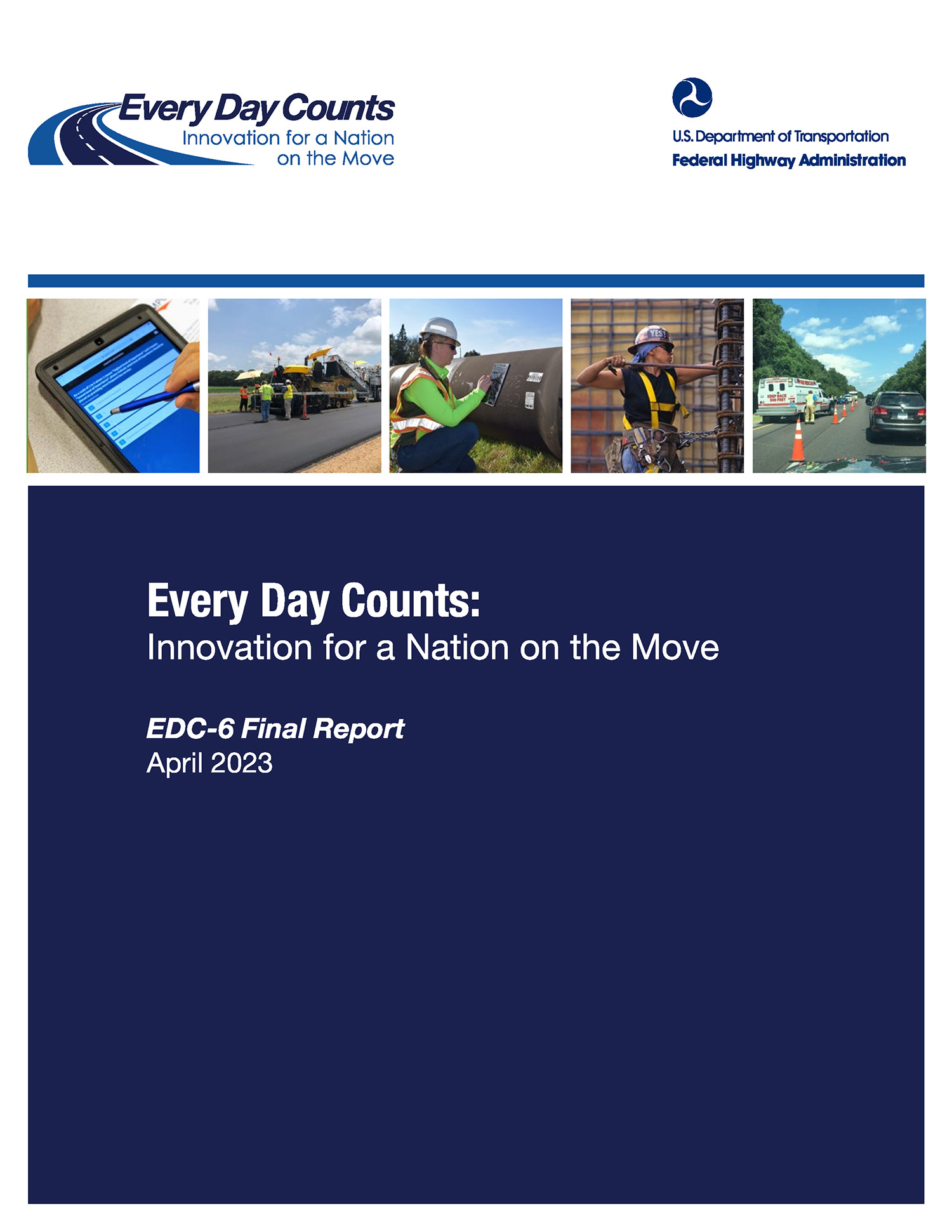
Innovation and Impact
States Report EDC-6 Deployment Successes
The Federal Highway Administration’s Every Day Counts (EDC) program uses a State-based model that identifies and rapidly deploys proven, yet underutilized innovations that make the transportation system adaptable, sustainable, equitable, and safer for all. Since 2011, FHWA has worked with various State departments of transportation (DOTs), local governments, Tribes, and other stakeholders to advance a new set of innovations every 2 years. The EDC-6 final report summarizes the progress States made to reach their goals across the seven innovations featured in this round and highlights several success stories.
Fifty-one States attained demonstration, assessment, or institutionalized implementation for virtual public involvement (VPI). VPI strategies enhance agencies’ efforts to engage the public by supplementing traditional processes such as face-to-face meetings with digital technology. The Michigan DOT, one of the States that has institutionalized VPI, developed a practical guide to VPI tools. The guide describes the basics of implementing VPI tools and their benefits, barriers to consider when using them, and how to make VPI efforts more inclusive.

Forty-three States reached demonstration, assessment, or institutionalized implementation for crowdsourcing for advancing operations, which offers strategies for integrating crowdsourced data from multiple streams to help overcome the limits of traditional traffic monitoring systems. The Indiana DOT (INDOT) merged data from third-party vehicle probe data providers with agency field devices. This allowed INDOT to effectively process vehicle speed data, estimate travel times between major cities, and pass that information along to traveler information systems. INDOT estimates that crowdsourcing data helped save about 116,000 hours of arterial travel time on one busy corridor alone when it used the data to retime traffic signals along that route.
Traffic incident management (TIM) tools and processes enable earlier incident detection, quicker on-scene clearance, and improved traveler information to reduce the dangers created by incidents, such as secondary crashes, and mitigate congestion. Next-generation TIM focused on improving TIM on all roadways by integrating proven technology, data, and training strategies. Thirty-eight States reached demonstration, assessment, or institutionalized implementation for this innovation. The Florida DOT (FDOT) migrated its TIM dashboard to a new global information system (GIS) platform that enhanced search capabilities and elevated the visualization of data in charts and maps. FDOT reported that the TIM data and dashboards have been a significant factor in funding increases for its statewide TIM efforts, including the Road Rangers and Rapid Scene Incident Clearance programs.
Read additional success stories in the EDC-6 final report from e-Ticketing and digital as-builts, strategic workforce devlopment, targeted overlay pavement solutions, and UHPC for bridge preservation and repair.
—MORE INFORMATION
Contact Julie Zirlin for information on the Every Day Counts Program.
Notice: The U.S. Government does not endorse products or manufacturers. Trademarks or manufacturers’ names appear in this article only because they are considered essential to the objective of the document.
Recommended Citation: U.S. Department of Transportation, Federal Highway Administration - Washington, DC (2023) Innovator Newsletter, July/August 2023, Volume 17 (97). https://doi.org/10.21949/1521753
- Cover
- An Open-Ended Approach to Meeting Design-Build DBE Goals
- EDC Legacy: Capturing the Value Created by Transportation
- Missouri Accelerates Market Readiness for Work Zone Innovations
- Innovation and Impact
- States Innovate
- STIC Showcase Features Homegrown Innovations
- EDC-7 Baseline Report Sets Goals for Seven Innovations
- About Innovator


